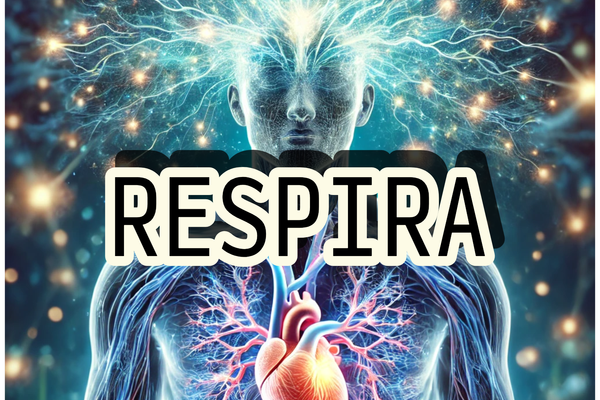The Challenge of Controlling Emotions: Insights from Plato’s Chariot Allegory and Modern…
Emotions are an integral part of the human experience, shaping our interactions, decisions, and overall well-being. However, for many…

The Challenge of Controlling Emotions: Insights from Plato’s Chariot Allegory and Modern Neuroscience
Emotions are an integral part of the human experience, shaping our interactions, decisions, and overall well-being. However, for many, controlling these emotions can be a significant challenge. I have personally struggled with emotion and impulse regulation, often feeling overwhelmed by my feelings and finding it difficult to maintain composure in stressful situations. This struggle is not uncommon, and understanding it can be the first step towards improvement.
In this article, we’ll explore the timeless wisdom of Plato’s chariot allegory, which provides a powerful metaphor for the battle within our minds. Additionally, we’ll delve into modern neuroscience to understand the brain’s role in emotion regulation, offering insights and strategies to help manage emotions more effectively.
Understanding Plato’s Chariot Allegory
Plato, one of the greatest philosophers of ancient Greece, used the chariot allegory to illustrate the complexities of the human soul and the challenges of self-control. Imagine a chariot pulled by two horses, driven by a charioteer. The charioteer represents reason, the noble horse symbolizes our rational and moral impulses, and the unruly horse embodies our irrational and emotional desires.
The charioteer’s task is to guide the chariot by maintaining balance and harmony between the two horses. When the noble horse cooperates and the unruly horse resists, the charioteer must use skill and strength to keep the chariot on course. This allegory vividly captures the internal conflict we experience when trying to regulate our emotions. The charioteer (our rational mind) must constantly work to control the unruly horse (our emotions), ensuring that we act in a balanced and reasoned manner.
The Neuroscience of Emotion Regulation
Modern neuroscience provides a deeper understanding of the brain mechanisms underlying emotion regulation. Key brain regions involved in this process include the prefrontal cortex (PFC) and the amygdala. The PFC, located at the front of the brain, is responsible for higher-order functions such as decision-making, impulse control, and emotional regulation. It acts as the charioteer, helping us navigate complex social and emotional landscapes.
The amygdala, on the other hand, is part of the limbic system, often referred to as the “emotional brain.” It plays a crucial role in processing emotions, especially fear and pleasure. When we encounter emotionally charged situations, the amygdala generates immediate, often intense, emotional responses. These responses can sometimes overpower the rational control exerted by the PFC.
The interaction between the PFC and the amygdala is critical for effective emotion regulation. Ideally, the PFC modulates the activity of the amygdala, allowing us to respond to emotional stimuli in a controlled and measured way. However, this balance can be disrupted by various factors, making emotional control difficult.
Strategies for Improving Emotional Regulation
Improving emotional regulation requires a combination of self-awareness, practice, and the right strategies. Here are some practical tips that can help:
- Mindfulness and Meditation: Practicing mindfulness can strengthen the PFC and enhance its ability to regulate emotions. Techniques such as deep breathing, meditation, and mindful observation can help calm the amygdala and reduce emotional reactivity.
- Cognitive-Behavioral Techniques: Cognitive-behavioral therapy (CBT) offers tools to identify and challenge irrational thoughts that drive emotional responses. By reframing negative thoughts, we can reduce the intensity of our emotions and respond more rationally.
- Healthy Lifestyle: Regular exercise, sufficient sleep, and a balanced diet can positively affect brain function, supporting better emotional regulation. Physical activity, in particular, has been shown to reduce stress and improve mood.
- Social Support: Connecting with friends, family, or support groups can provide emotional relief and different perspectives on our struggles. Talking about our feelings with others can also help us process emotions more effectively.
Relating these strategies back to Plato’s allegory, mindfulness and meditation can be seen as strengthening the charioteer’s grip on the reins, while cognitive-behavioral techniques help in training the unruly horse to be more cooperative. A healthy lifestyle and social support fortify the charioteer’s endurance, enabling better overall control of the chariot.
Controlling emotions is a challenging but essential aspect of leading a balanced and fulfilling life. By understanding the timeless wisdom of Plato’s chariot allegory and the modern insights provided by neuroscience, we can better appreciate the complexities of our emotional struggles. The interplay between the rational and emotional parts of our brain is a delicate balance that requires ongoing effort and the right strategies.
As someone who has struggled with emotion and impulse regulation, I have found solace in this understanding and have made strides in improving my emotional control. While the journey is ongoing, embracing the knowledge and tools available to us can make a significant difference. Remember, the charioteer within you has the potential to guide the chariot, no matter how unruly the horses may seem.



